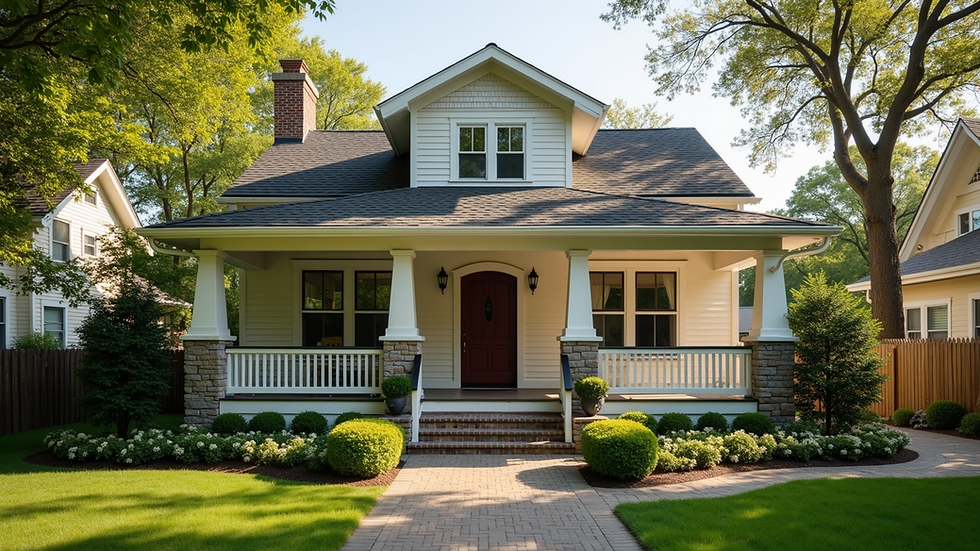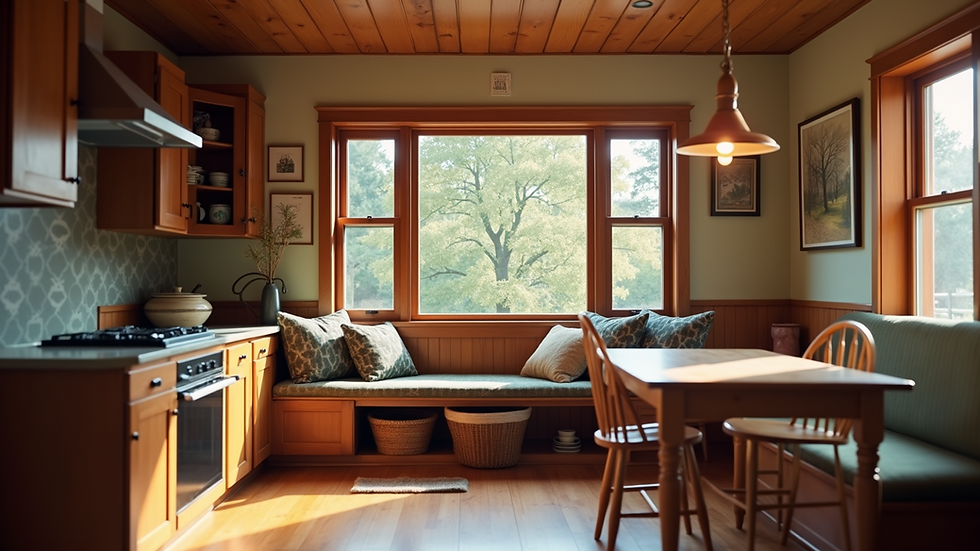Exploring the Appeal of Craftsman Housing
- RBA Home Plans

- Jun 22
- 4 min read
Updated: Jul 7
Craftsman homes, with their distinct architectural style and warm, inviting features, have become increasingly popular among homeowners. They embody a sense of comfort and craftsmanship that resonates with many people. This blog post will delve into the unique characteristics, history, and cost of these lovely abodes, along with recommendations on how to incorporate aspects of Craftsman design into modern living.
The Charm of American Craftsman Homes
American Craftsman homes originated in the early 20th century as a reaction against the industrialization that marked the era. The Arts and Crafts movement emphasized craftsmanship, natural materials, and functionality. These homes feature low-pitched roofs, exposed rafters, broad front porches, and large overhanging eaves.
When you view a Craftsman house, the attention to detail stands out. You’ll find beautifully crafted woodwork, built-in furniture, and decorative tiles. The interior spaces are designed for comfort and an informal lifestyle, often featuring open floor plans and cozy areas for family gatherings.

The warmth of natural materials like wood, stone, and brick often accentuates these homes, giving them a timeless quality. The integration of the home with its surrounding landscape is also an essential feature, creating a cohesive aesthetic that feels welcoming and harmonious.
Key Features of Craftsman Houses
The hallmark characteristics of Craftsman houses make them easily identifiable. Here are some of the main features:
Low-Pitched Roofs: The roofs of Craftsman homes typically have a low pitch, giving them a unique silhouette compared to other architectural styles.
Exposed Rafters and Beams: This feature showcases the craftsmanship behind the home. The exposed beams contribute to the rustic appeal and add depth to the overall design.
Verandas and Front Porches: Deep porches provide a place for relaxation and socializing. They are often adorned with sturdy columns and railings that enhance the home’s charm.
Built-In Furniture: Many Craftsman homes include built-in bookcases and benches, which maximize space and offer functional design.
Natural Materials: Craftsman homes emphasize organic elements. Many builders use wood, stone, and brick sourced locally to create a unique look and feel.
These features work together to create an inviting environment that not only looks beautiful but also enhances the quality of life for its residents.

How much do Craftsman houses cost?
The cost of Craftsman houses can vary widely based on several factors, including location, size, and specific features. On average, one can expect to pay anywhere between $150 to $300 per square foot for a newly built Craftsman home. This price range tends to reflect the high-quality materials and craftsmanship that go into creating these homes.
As demand for Craftsman-style homes increases, certain market trends can affect pricing. In sought-after neighborhoods, the price may be on the higher end of the spectrum. Conversely, in less competitive markets, one might find more affordable options.
In addition to the cost of the home itself, it's important to consider potential expenses related to maintenance and landscaping. Craftsman homes often require upkeep of unique architectural features, which could further impact long-term costs.
The Enduring Popularity of Craftsman Homes
The popularity of Craftsman homes has endured for more than a century, but why have they remained so appealing? There are several reasons for this enduring allure:
Sustainability: With growing awareness of environmental issues, many homeowners are drawn to the sustainable aspects of Craftsman design. The use of local materials often minimizes the environmental impact of construction.
Timeless Elegance: The design elements of Craftsman homes create an aesthetic that is not tied to any specific trend. This timelessness appeals to buyers looking for something with lasting beauty.
Sense of Community: Craftsman homes are often found in neighborhoods with a friendly atmosphere. Their inviting porches and communal spaces promote interaction and connection among neighbors.
As more people seek homes that reflect their values and lifestyle choices, the demand for Craftsman housing remains strong.

Incorporating Craftsman Elements into Modern Homes
If you're captivated by the charm of Craftsman homes but prefer a modern aesthetic, there are ways to incorporate Craftsman elements into your contemporary living space:
Use of Wood: Introduce wooden details in your home. This could be through exposed beams, wooden cabinetry, or even reclaimed wood accents to evoke the warmth of Craftsman design.
Built-in Features: Create built-in shelves or seating areas to maximize space and add character to your home. These focal points can serve both functional and aesthetic purposes.
Porches and Outdoor Spaces: If possible, design your outdoor areas to include welcoming porches or patios. These spaces can embody the community feel that Craftsman homes promote.
Natural Materials: Integrate stone or brick into your landscaping or interior design to create a rustic yet modern ambiance. Natural colors and textures will complement your home’s aesthetic and connect it to the environment.
By making thoughtful design choices, you can enjoy the best of both worlds: the charm of Craftsman architecture and the modern comforts of contemporary living.
Craftsman homes have firmly established themselves as a beloved architectural style in America. With their warm aesthetics, functional designs, and lasting appeal, they continue to capture the hearts of homeowners across generations. Whether through their original forms or as inspiration for modern interpretations, Craftsman housing represents a commitment to quality and craftsmanship that enriches our living spaces. Embracing this style may not only enhance the beauty of your home but also foster a deeper connection to the values of community, craftsmanship, and sustainability.
